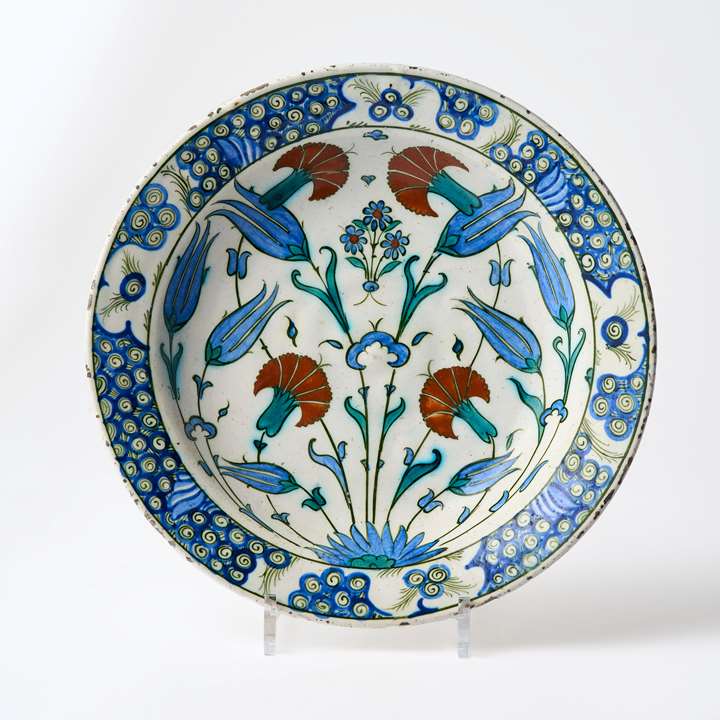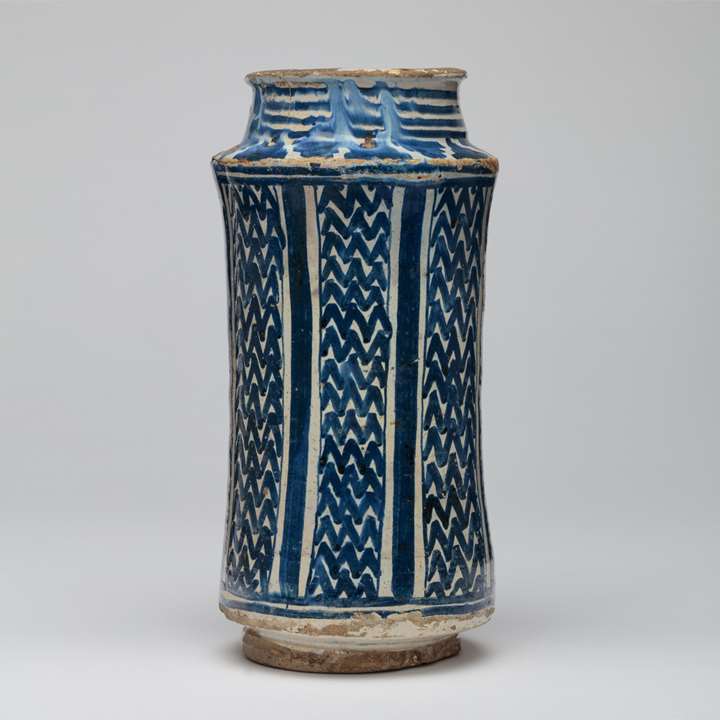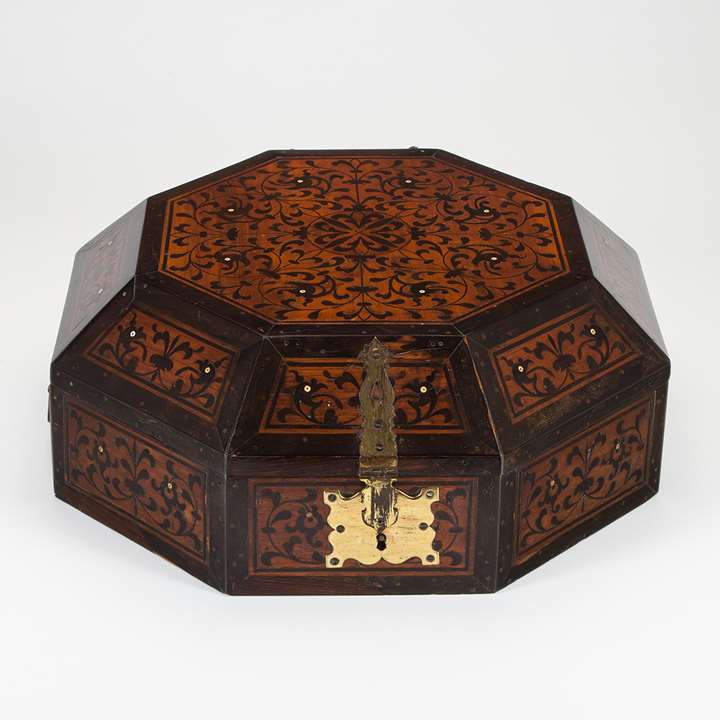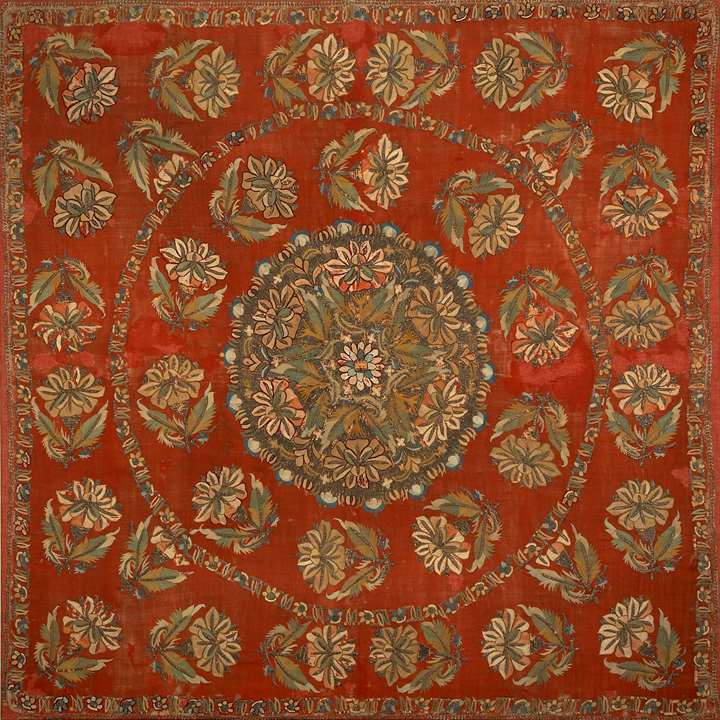Description & Technical information
This pair of imposing incense burners with bulbous legs, straight body and high loop handles must have been made for an important temple or palace hall. On each side of their bodies is a lobed panel bearing an inscription in Arabic: “قا ل النب يع س م( ع لیھ السلا م ا) فضل الذك/ر لاا لھا لا لله مح م درس و للله”/ The Prophet, peace be upon him, said: “The most excellent remembrance (of God) is There is no god but God, Muhammad is the Messenger of God”. This is the Islamic confession of faith, one of the Five Pillars of Islam, and part of the call to public prayer in a mosque recited by a muezzin at prescribed times of the day.
Why were Islamic inscriptions cast into Chinese bronzes, and also inscribed on Chinese porcelains? Some scholars opine that they were not made for export to the Middle East, India, or Southeast Asia, because they are not found in extant collections such as those from the Ardebil Shrine in Iran and the Topkapi Palace in Turkey. Rather, they served Muslim administrators at the Chinese court, or foreign merchants in China’s ports.1 Other experts have proposed that they were simply fashionable decorations for Chinese clients, the exotic script adding excitement and allure to objects.2 However, whether they were made for Muslim clients or Chinese, these paired censers were luxury products. They were cast from a dense, brass-like bronze and had their surfaces augmented with splashes of gold. This was achieved by fire gilding, in other words by applying gold in the form of a gold/mercury amalgam and then heating the vessel to drive off the mercury. A small amount of gold was left adhering to the base metal since this method was especially suitable for the application of very thin layers.3 The process could be repeated several times to build up layers of gold. Bronzes with gold-splash decoration are highly regarded by collectors.4
It is likely that Chinese craftsmen worked from drawings or models to reproduce inscriptions in languages unfamiliar to them. Small mistakes on some pieces indicate their difficulty in transcribing unfamiliar scripts, though the inscriptions on these two incense burners are correct. For this reason, there are a number of Chinese objects bearing similar inscriptions to these two pieces, many of them in the form of incense burners. An almost identical censer in the Asian Art Museum, San Francisco, bears the same inscription.5 There are many vessels in different forms with the same inscription, for example one in the C.L. David Foundation and Collection in Copenhagen (accession no. B62B31) and one in the Robert H. Clague Collection in Phoenix Art Museum, Arizona (accession no. 7/1971). The present pieces were sold in London in 1974, and then housed in a private collection in Switzerland, the “Asia-Africa Museum Genève”, whose labels anoint the bases. A photo of one of the incense burners was published in a Portuguese magazine, Casa & Jardim (House & Garden) in November 1999.
1 Harrison-Hall, Jessica. Ming Ceramics in the British Museum. London: British Museum Press, 2001. pp.192-199.
2 Clunas, Craig. Empire of Great Brightness: Visual and Material Cultures of Ming China. London: Reaktion Books, 2008. p.103.
3 Kerr, Rose. Later Chinese Bronzes. London: Victoria and Albert Museum Press, 1990. p.39.
4 They are also valued by museums. For example, bronze wares collected by Randolph Berens, alongside other gold-splashed bronze wares, were exhibited in the Victoria and Albert Museum, London in 1915, and published by E. Mew, ‘Gold-splash Bronzes in the Collection of Mr. Randolph Berens’, The Connoisseur, November 1915 (London), pp.131-144, pls.10,11, 13, and 19.
5 Mowry, Robert D. China’s Renaissance in Bronze. The Robert H. Clague Collection of Later Chinese Bronzes 1100-1900. Phoenix: The Phoenix Art Museum, 1993. pp.126-130, no. 25.
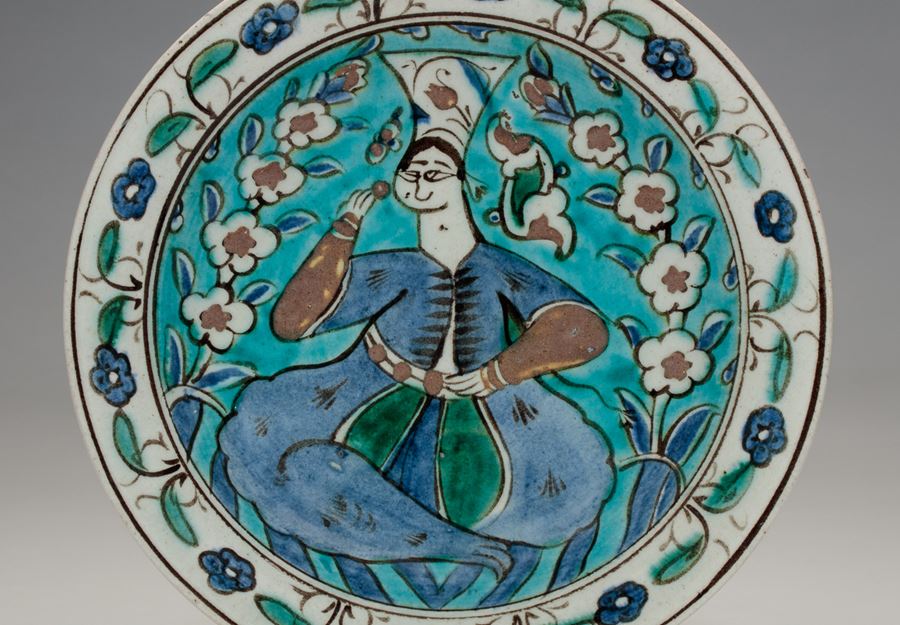
Discover the gallery
Amir Mohtashemi Ltd.
Indian,Islamic and Cross-Cultural Works of Art


